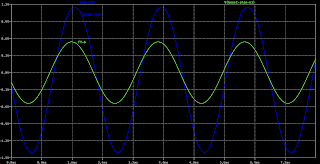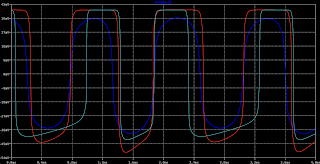The Shin-Ei FY-6 has a 100k resistor instead of the 22k resistor found on the input of the Univox Super Fuzz, which really affects the output of the boost stage.
There's a slightly larger resistor on the emitters of the transistors responsible for the fuzz and the octave effect - 2k instead of 1k8, reducing the potential fuzz a little.
The Shin-Ei has a 1n cap across the collector and emitter of one of the transistors in the boost section, which is also common to earlier Super Fuzzes (grey box). Later Super fuzzes had 2n caps (the colourful 1970's boxes).
This is sweeping the Expander pot (fuzz) - on lower settings, there's much less clipping than the Super Fuzz. Signal has been taken from the unfiltered output, as it's easier to see the differences.
Same as above, but more heavily clipped.





No comments:
Post a Comment